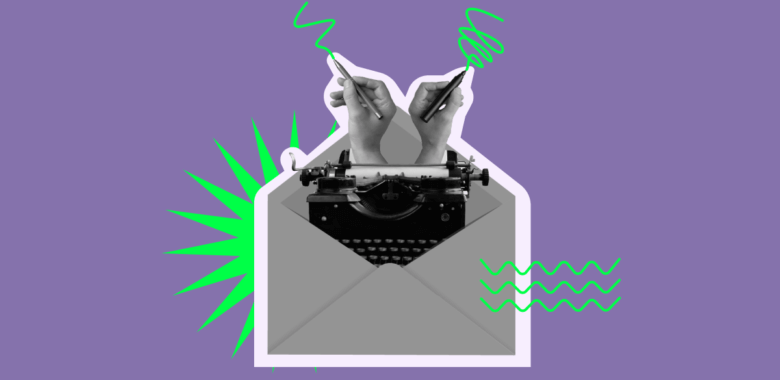The email reminds the social benefit one gets from engagement: he shows himself as an experienced traveler or visitor and shares his experience with those who don’t know what he knows yet. It ends with a great CTA: “Contribute now”.
Abandoned cart emails are great examples of how copywriters can use CTA. Your client wants the products, but they simply forgot to finish their purchase. Help them a bit: encourage them to act.
Here are some examples of CTAs for abandoned cart:
- Seal the deal
- Get my 25% off
- Reclaim my cart!
- Finish checking out
- Complete your order
Don’t make the text look like spam
The main reason your email may look like spam and may be marked as one is that it is addressed to the wrong audience. Spammers buy email lists and send irrelevant newsletters to anyone they can reach, so if your email is not relevant for the receiver – it looks like spam. But if you keep the subscriber persona and their benefits in mind, that will not happen.
Misleading subject lines also make the emails look like spam. The importance of writing a catchy subject line may make copywriters want to make it look a bit over-the-top, showing some uncertain prospects and not 100% relevant to the email itself. Make sure that your subject line matches the content of the email.
Good news: spam trigger words are no longer relevant. There used to be a long list of stop-words one needed to avoid in the newsletter not to be detected as spam, such as “Free”, “Problem”, or “Success”.
But that does not mean that the inbox service providers (ISPs) don’t detect spam anymore – they simply became more sophisticated and use other methods now. They check IP addresses, domains, email authentication, and subscriber engagement. Anyways, the best way to avoid spam filters still is writing useful emails and sending them to the right segment of the audience.
Make sure it is relevant
Why does email marketing convert? Because it lets you segment your audience and send relevant content. For example, if you operate worldwide, you can send your readers from different countries emails in their native language. If you have an event in one exact city, you can invite readers who live there. You can congratulate women with Women’s day and men with Men’s day.
You can make your segmentation even more specific and linked to your product line. If you get to know your audience better, you will know their occupation, whether they have hobbies or are interested in exact products. You can ask your readers about their preferences directly in your newsletter.
Relevance is also important in terms of timeline. Your reader should be already familiar with the terms and events you write about. If by some chance he is not, you should provide extra information they may browse if they need to. For example, if you have a complicated weather app with lots of parameters, you should not send the first email with a comparison of GFS and ICON weather models. It would be more relevant to start with a series of meteorology lessons with the basics.
Picture the email chain your client receives as a road with milestones. They should be put successively one after another to make their journey safe and predictable. Avoid any inadequate signs on this road. Show clear prospects of your further collaboration.
Test different variations
A/B testing rules. It lets you find out what really works for your customers. No guessing – you can test different subject lines, text size and formatting, calls-to-action and “From” names and see what works better for your audience. Tests help you make decisions based on facts.
It only takes a few minutes to start testing: you simply make a copy of your email, change the element you wish to test and choose the audience for testing.
You can test using emojis to see whether your audience likes it or any segment of your audience does. You can test different text sizes and formatting. Anytime you’re not sure whether something works or not – go test it.
Personalize
People love reading about themselves.The beauty of email marketing is the fact that you can get to know your audience and segment it. You can divide readers by location, gender, age, interests. And you can call your readers by their names. Personalization improves readers’ experience and makes them feel happier.














